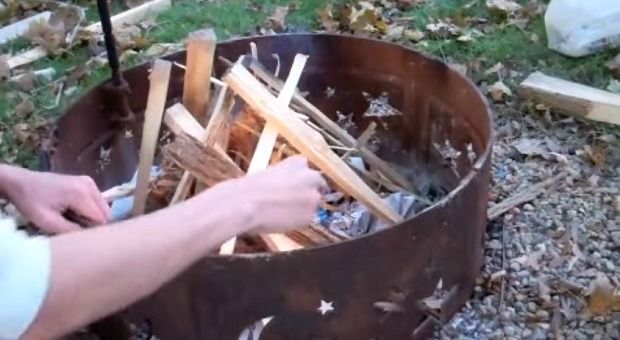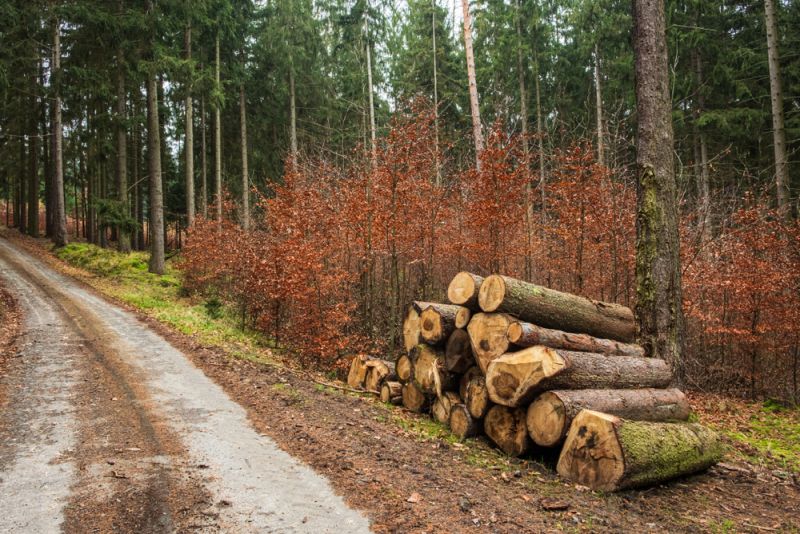Let me start today’s article with an axiom: despite the fact that DIY-ing briquettes is a hard and messy job, if you’re not afraid to get your hands dirty, you can make a reasonable income by selling (your extra) charcoal/wood briquettes.
The idea is that you can make DIY briquettes for your homestead provided you’re fine with “dirty jobs” whilst making an extra buck by selling some of them to your neighbors.
The demand for these babies is pretty high, so there’s definitely money to be made from briquettes.
Just remember that the coal industry in the US is expected to boom under Donald Trump‘s administration after it was eviscerated by the global warming cabal. Let that sink in real good folks.
So, not only you can save a lot of money on your heating bill by DIY-ing briquettes for your homestead, but you’ll be able to supplement your income by selling what’s extra. I don’t know about you, but to me this sounds like a definite win-win situation.
Now, as per the dirty part of the job, the hardest and dirtiest part of DIY-ing briquettes is represented by the charcoal dust, which must be crushed and mixed.
To begin with, briquettes are blocks made from compressed charcoal dust, coal dust, wood chips, sawdust, biomass etc, which are used as a fuel in boilers, stoves and what not.
Basically anything that burns can be used in making briquettes, but some materials are better than others with regard to their caloric output. In other words, some burn better and give more heat than others.
Today we will concentrate on the best stuff around for DIY-ing briquettes, which is wood and its derivative (charcoal).
Transform Wood into Briquettes in 3 Easy Steps
Of course, I am not talking about getting out in the forest and chopping wood like an old school lumberjack. The idea is to use wood shavings, wood chips or sawdust which are byproducts of wood processing factories. Also, these materials are almost the ideal stuff for making fuel briquettes.
Actually, many of these factories (furniture/woodworking businesses) are buying wood briquette machines for processing the wood residues and making a few bucks from what others may consider waste.
Now, if you’ve got what it takes, i.e. the will power, skill, the briquette-machine, and the aforementioned raw materials, let’s talk about the specifics of DIY-ing briquettes from wood residues.
1.Prepare the Raw Material
First things first: you’ll have to take your wood raw material and get it ready for the manufacturing process. You’ll have to transform the big chunks of wood chips and/or wood shavings into sawdust, which is much smaller and thus more malleable. If you’re already in the possession of sawdust, you’re all set.
Generally speaking, sawdust can be more or less humid, depending upon how it was transported, stored and so on.
If there’s too much moisture trapped inside, you’ll have to dry it with a the dryer or whatever means you have at your disposal, as moist sawdust is not suitable for making briquettes. You’ll have to do this if the moisture level is over 16 percent. The lower the moisture, the better.
Truth be told, dryers are regularly used in large scale briquetting operations, but you can always air-dry your sawdust by spreading it out on the ground and letting it dry.
Obviously, the weather is key in this endeavor, so you’ll have to choose a sunny period that’s as close to dry as the Sahara desert as you can get. Just find a piece of smooth, clean ground and have patience. Drying your sawdust indoors would be the best idea, provided you have the means.
2. Put the Raw Material Inside the Briquetting Machine
Now, for the second part, you’ll have to put your nice and clean sawdust inside a briquetting machine. Usually, the feeding mechanism is an elevator, but you can feed the machine yourself, though you’ll have to be cautious and take care about the feeding-speed, so you don’t block the machine.
Video first seen on Rajkumar Agro Engineers Pvt Ltd.
There are basically two main types of wood briquetting machines: the screw briquette machine and the mechanical stamping wood briquette machine.
The latter can be used for making both thick briquettes and thin pellets while the former is regularly used for charcoal briquettes and/or barbecue briquettes. These are the droids you’re looking for. More about charcoal in a moment, right after the break.
3. Prepare the Briquettes for Storage
In the last step, after you’ve already made sawdust-briquettes, they must be cooled for storage and stored or sold, or whatever.
The idea is that if you have plenty of wood residues available, spending some money on a wood briquette machine would be a clever investment, as you will become more energy/fuel efficient, get off the grid in small incremental steps.
Also, you’ll be able to make some extra money selling your excess briquettes to your friends and neighbors. Go in together with a friend on a second-hand piece of gear if you need to. Ideally, you should go for a briquetting machine which can build both wood and charcoal briquettes.
How to Make Briquettes from Charcoal
If you were wondering what’s up with the charcoal briquettes, well, charcoal is made of wood, alright folks? Hence, charcoal briquettes are basically the same thing as wood ones, just better.
The only messy thing about making charcoal briquettes is the crushing and the mixing of the charcoal dust itself, which is a dirty job by any measure.
Video first seen on Primitive Technology.
Transforming the charcoal dust into fuel briquettes will require a binder – something like the Force, which binds the universe together. I am talking about an agglomerating material which must be added to the charcoal dust to keep it together after enough pressure is applied to transform that dust into a solid and stable briquette.
Video first seen on roonymanfo.
Charcoal briquettes have higher caloric power than wood briquettes; they burn for longer and they produce more heat and less (almost zero) smoke. Also, they’re lighter.
In order to DIY charcoal/char, you’ll require wood scraps. The best material for making charcoal is hardwood such as birch, beech, hickory, maple and oak.
Charcoal briquettes are basically 90% charcoal/char dust and 10 percent “minor” ingredients, including the binding agent I already told you about above, which is typically starch made from wheat or corn, an accelerant (sawdust or nitrite for hard-core chemists), and lime as an ash whitening agent.
Here are some recipes for making your own charcoal briquettes:
- 22 pounds of charcoal/dust fines and 0.66 pounds of starch or
- 88 pounds of charcoal/dust fines, 8.8 pounds of sawdust, 5.5 pounds s of starch, 2.2 pounds of lime (or calcium carbonate) or
- 220 pounds of charcoal/dust fines, 6.6 pounds sodium nitrate, 15.4 pounds of starch, 4.4 pounds of lime.
Video first seen on fireman7753.
The accelerant is important because charcoal briquettes need the stuff to burn faster because, due to the compacting process, the briquette cannot absorb enough oxygen for a proper combustion, unlike a lump of charcoal for example. Here the accelerant comes into play.
You’ll require 3-4% of sodium nitrate (this is an oxidant which releases oxygen when heated and accelerates the burning process) in your charcoal briquette or 10-20 percent sawdust.
Keep in mind that if you’re using uncarbonized sawdust, your briquettes will be smoky; hence if you’ll be going for sawdust as an accelerant, it would be ideal to ferment it for 4-5 days by keeping the sawdust in water in order to reduce the smoke.
The ash whitening agent is an indicator in charcoal briquettes. When the briquette are burning inside your stove turn white, it means that they’re ready. The white ashes are very appealing in briquettes especially if you’re going to sell them.
To use starch as a binding agent, you’ll have to gelatinize it first, which in laymen’s terms means that you’ll have to make a porridge from your starch and then use the porridge to bind the charcoal dust together. You can also use mashed waste paper pulp as a binder if you don’t have starch or it’s too expensive.
Now that you have enough info to start making your own briquettes, it only takes some will to proceed with this project. Or maybe you already have any experience in making this type of fuel? This is a great skill that you would need for surviving an energy crisis or even an EMP.
Click the banner below to find out more about surviving this disaster, and even much more than that!
This article has been written by Chris Black for Survivopedia.










Sam Maxi | September 21, 2019
|
Hello, Its a cool and amazing idea for making wood briquettes. I got some good idea about making wood briquettes from your article. Really its help me a lot.
Thanks for your amazing ideas.